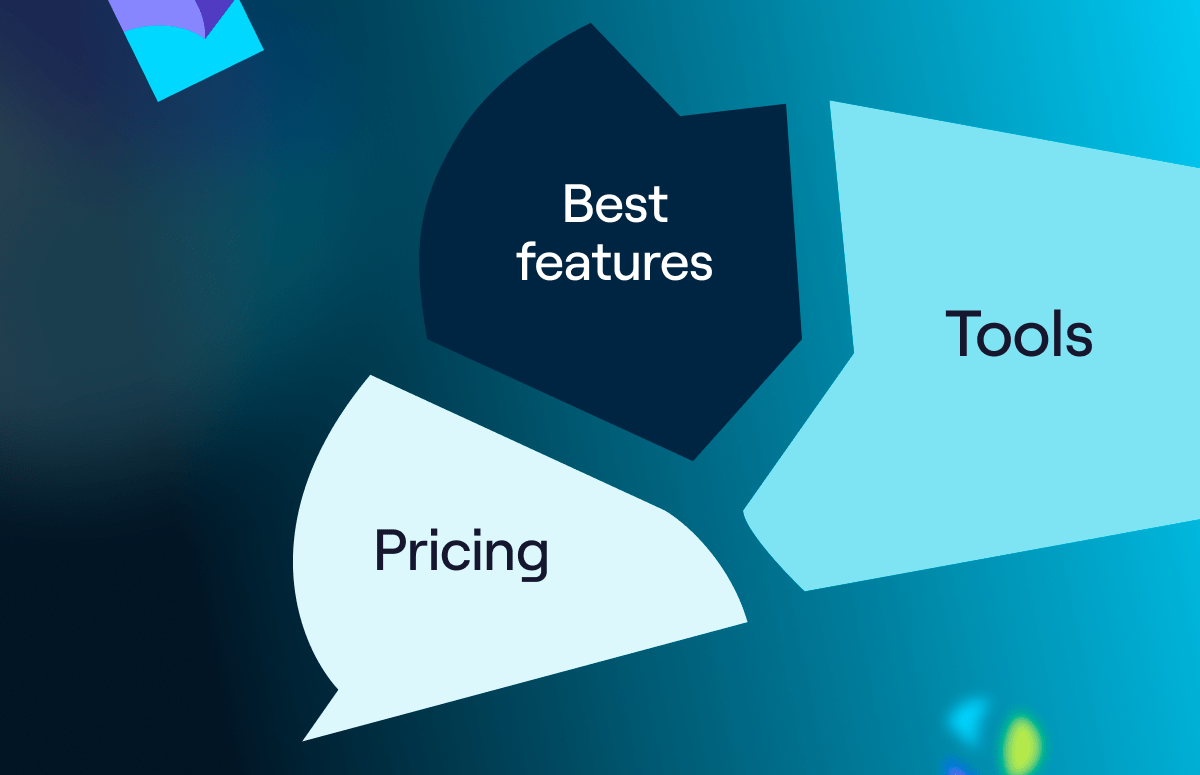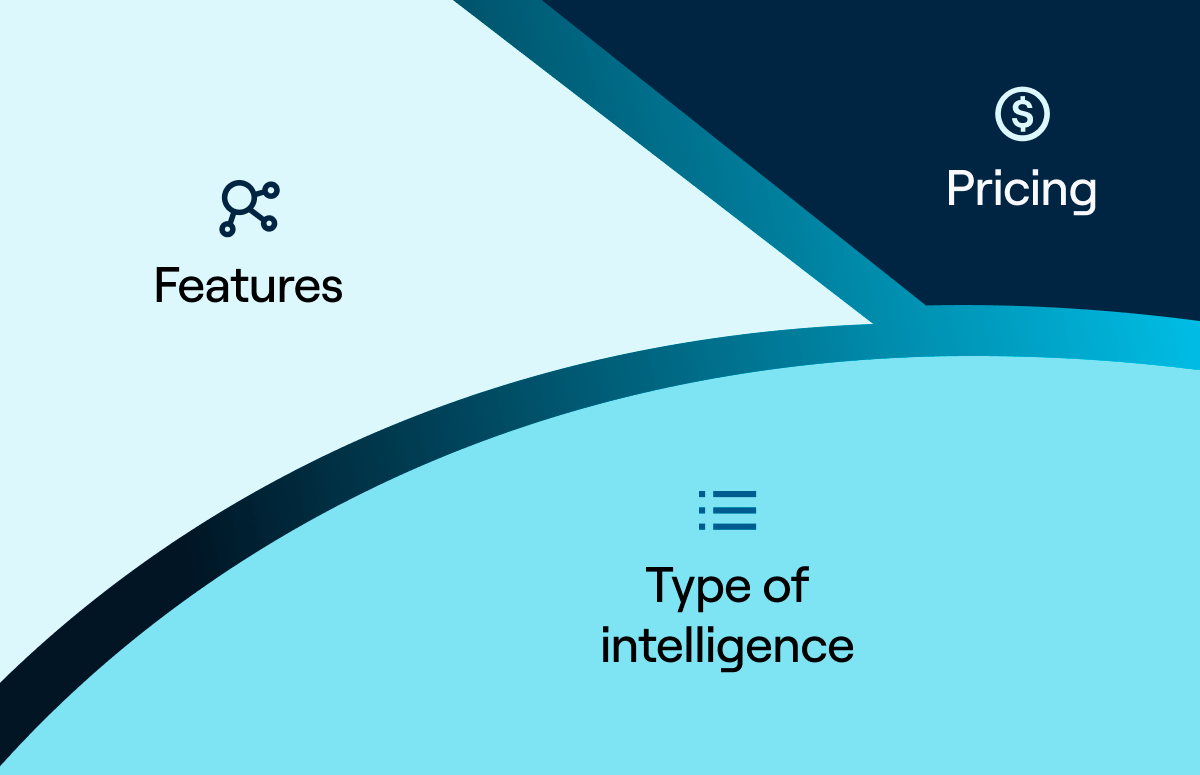What is Sales Operations? Guide to Strategy & Team Structure
What's on this page:
Interested in more sales insights? Check out the SDR Zone.👇
Some companies might think they have a robust sales operations team.
When in reality, the department is just a receptacle for all the work their sales leaders can’t find time to do.
Sales analytics, software evaluation, process improvement… pass it to sales ops!
This is a recipe for chaos that hinders and overloads sales efficiency.
It’s essential to define the role and structure of your sales ops team before implementation.
In this article, we’ll help you understand sales ops so you can develop a sales operations strategy that aligns with your organisation’s needs.
What is sales operations?
Sales operations use systems and technology to help sales teams meet their goals. They rely on data to make decisions, like how many reps to hire and where to place them. The main objectives are efficiency, excellence, and continuous sales process optimisation.
The B2B sales ops team focuses on making a company’s sales approach strategic, data-driven, and deliberate rather than reactive or haphazard.
You can think of the Head of Sales Ops as the strategic advisor to the VP of Sales.
They’re thinking long-term, often longer than 18 months out, while a VP of Sales might focus more on the shorter-term objectives.
In terms of responsibilities, you can boil sales ops down to three overarching focuses:
- Create a sales strategy and identify objectives.
- Support sales representatives in reaching those objectives.
- Handle sales analytics to improve sales efficiency and keep leadership updated.
In the next section, we’ll go deeper into each focus area, sharing the day-to-day work you can expect from a sales ops professional.
What does sales operations do?
Sales operations is a critical function within an organisation that supports the sales team in driving revenue and achieving business objectives.
The primary goal of sales operations is to streamline and optimise the sales process, ultimately increasing efficiency and effectiveness.
How do they achieve this?
Let’s go over some of the key responsibilities of the average sales operations team, divided into three harmonious focus areas: strategy and ops, analytics, and performance.
Sales strategy and operations
Sales operations professionals work closely with senior leadership to develop strategic plans aligning with the company’s goals.
This includes identifying target markets, setting sales targets, and developing sales strategies to achieve those targets.
Here are the key strategy and operations tasks of the standard SO team:
Define and enhance the sales process
They determine the sales process stages and standardise them in the CRM.
Determine longer-term sales objectives
Figure out which territories to pursue, which solutions to focus on selling and other longer-term objectives.
Find and implement sales best practices and tools
Sales ops are always looking for sales and industry best practices they can adopt and integrate into the sales process.
Keep leadership updated on sales
They run reports that help executives stay in the loop about all things sales.
Manage cross-departmental collaboration
Other sales operations responsibilities include supporting the sales team by helping streamline processes, providing training and resources, and ensuring that SDRs have the tools they need to succeed.
Team leaders ensure sales align with marketing, product, and company goals.
Sales analytics and data
Sales operations are responsible for collecting and analysing data related to sales performance, customer behaviour, and market trends. This data helps identify areas for improvement and make informed decisions about sales strategy.
Handle sales forecasting
They use historical and market data to predict how sales will fare in the short- and long-term.
Conduct win/loss analyses
Sometimes, they’ll lead the study of sales deals to determine what activities commonly lead to success.
Determine and track sales KPIs
Sales ops identify which KPIs to track; these metrics help them assess and iterate on their initiatives and sales process effectively.
Set up sales dashboards
They work with sales managers to create dashboards for reps to track their key metrics and progress towards goals.
This is a lot to handle on their own, so SO teams often work closely with IT, especially regarding data hygiene and cleansing.
Sales performance
Sales operations also play a crucial role in measuring the sales team’s performance.
They track key performance indicators (KPIs) to evaluate sales strategies’ effectiveness and identify areas for improvement. This data-driven approach allows them to make informed decisions about resource allocation and strategy adjustments.
Additionally, they’re responsible for forecasting revenue and setting realistic targets for the sales team. By analysing historical sales data and market trends, they can provide accurate forecasts that help the company plan for future growth.
Find and evaluate sales technology
A sales operations specialist is often responsible for evaluating and implementing B2B technology, such as CRMs, sales software, prospecting tools, digital sales rooms and analytics platforms.
Plan and handle sales training
The SO team might create and implement a training plan depending on the organisation.
Facilitate sales communication
Sales ops keep SDRs informed through reporting, such as a pipeline report, and sharing victories and changes with the team.
Identify sales tasks to automate
Sales operations managers are experts on the tech needed to streamline prospecting and automate B2B sales.
Remember that some of these performance tasks might fall into the hands of a sales enablement department — though some companies bring enablement into sales ops.
Overall, sales operations are crucial organisational functions that help drive revenue, improve efficiency, and support the sales team in achieving their goals.
By focusing on strategy, support, analytics, technology management, and performance measurement, sales ops professionals play a crucial role in ensuring the sales team’s success.
Why is sales operations important?
Implementing a sales operations process streamlines your sales activities for efficient revenue generation, and in turn, you ensure everything sales does is in service of your organisational goals.
You also give your VPs and Managers more time to focus on deal-closing and management tasks rather than running win/loss analyses or filtering lead lists for new reps.
Here are some of the other benefits of establishing a dynamic sales operations team structure:
- Streamline sales processes to make them more efficient and scalable.
- Boost sales pipeline performance.
- Create alignment with business goals across departments.
- Implement data-driven strategies to enhance the effectiveness of your sales team.
- Introduce new tech and best practices into the sales process.
The downstream effects of a sales operations department are shorter sales cycles, better win rates, and, ultimately, more revenue for your business.
How do you build a profitable sales operations team?
The sales operations department structure comes in all shapes and sizes. It’s up to you to decide what structure works best for your business and your future goals.
You might only need one sales operations consultant if you’re a startup.
Mid-to-enterprise organisations will need a larger team as they’ll have more SDRs to support and much more data to analyse.
Here are a few examples of sales operations organisational structure:
- Some teams might have a tall structure with, in descending order of authority, a VP, manager, and analyst.
- Others might have more of a flat structure, with one head honcho at the top and everyone else on the same level.
For example, Brian Chin, Director of Sales Operations at Spring Health, has four team members and uses a quarterly rotation system where they alternate functions.
This allows them to learn from each other, master the various functions of sales ops, and form a holistic understanding of the discipline.
Meanwhile, other companies divide their sales ops team into two sub-departments based on core competency — one for technical know-how and support and one for big-picture strategy.
Despite these differences, there is a standard sales operations team structure you can use as your template. Tweak it according to your sales needs and industry best practices:
Breakdown of a sales operations team structure
Below is a breakdown of the significant sales operations roles in descending order of experience:
VP of Sales Operations
AKA the director of sales operations. They’re the strategic advisors to your Head of Sales and team leader.
They’ll define the sales ops strategy, coordinate with other departments, and present to leadership.
Sales Operations Manager
Often second-in-command, the manager oversees a team of operations analysts or specialists who help them improve the sales process, find new technology, run analysis projects, and perform other high-level tasks.
Sales Operations Analyst
The analyst is proficient in sales intelligence tools, Excel, data modelling, and other analysis techniques.
They focus on using data to answer questions that will help the sales team improve their strategy and process.
Sales Operations Representative
An entry-level employee, this rep typically works closer with sales reps than the other roles, supporting them in various ways, from helping them create a sales dashboard to providing them with sales automation.
As your sales team grows, you’ll discover new operational needs. As a result, your sales ops team will increase, and each member will become more specialised.
At some point, many companies split a few of these roles into two. So, for example, you might have a Senior Analyst who manages an Analyst.
Businesses may also hire operations specialists focusing on one core goal (e.g., improving sales velocity or training the sales team).
Sales operations KPIs: What to track
How do you tell if your sales operations strategies are paying off?
You’ll have to monitor performance, mainly tracking the key metrics influenced by your OS team and metrics related to their core functions.
Here are the sales operations goals and KPIs to track:
Average win rate
This is one of the best KPIs for sales operations. An increase in this performance metric is generally a sign that the sales operations skills, ideas and changes are paying off.
Average sales cycle length
Sales operations spend a lot of time trying to impact sales efficiency; average sales cycle length indicates whether or not their methods are working to this effect.
Lead response time
Considering how crucial getting a lead’s attention is to sales, operations teams focus a lot on supporting reps with B2B data, workflows, and technology to engage leads.
Lead response time indicates how well it’s all working.
Tech usage rates
This is an essential sales operations KPI. SO teams must know if SDRs are using the technology they implement and how they use it.
This helps them to spot failures in optimising the platforms and clues them into how well they performed. If tech usage rates are low, the SO team should respond by training reps on it.
Forecasting accuracy
Sales forecasting and predictive analytics (identifying potential problems) are significant aspects of sales operations. They need feedback on the actual vs the predicted to refine their predictive methods.
With this info, they can iterate their strategies to make them more effective next time.
Consistently tracking these KPIs will help you improve your operations department and, in turn, everything they affect — e.g., productivity, sales efficiency, and annual revenue.
Tools and software every sales operations team needs
Several tools can make sales operations duties easier. The main tools every SO team needs are a CRM, sales forecasting tool and territory planning tools.
Let’s look at them in more detail:
1. CRM (Customer Relationship Management) software
A CRM system is essential for SO teams to effectively manage customer interactions, track leads, and streamline the sales process.
This sales operations tool helps to:
- Organise customer data.
- Track communication history with clients.
- Manage tasks and appointments.
- Analyse sales performance.
2. Sales forecasting tool
Sales forecasting tools help predict future sales trends based on historical data and current market conditions.
This allows operations teams to:
- Make informed decisions about resource allocation.
- Budget.
- Plan.
3. Territory planning tools
These tools help teams to effectively manage and optimise their sales territories.
They allow teams to:
- Segment customers.
- Assign reps to specific regions.
- Track performance in each territory.
They ensure that sales reps have resources that support their roles and are focused on the most promising opportunities.
Inside sales operations: strategy and challenges
Sales operations strategies have become increasingly popular in recent years. Why?
Because technology has enabled more efficient ways of reaching and engaging with prospects.
Whether you’re creating a new team or improving your existing operations department, you’ll find the below sales operations best practices and challenges valuable 👇
Best practices
Make data-driven decisions
When tweaking the sales process or refining the overall strategy, ensure you use data to inform these decisions. Though “gut feel” certainly has its place, statistics should support it.
Data-driven decision-making is crucial in sales operations. It allows companies to identify trends, track performance, and make informed decisions that drive growth.
By analysing sales operations metrics such as conversion rates, customer acquisition costs, and revenue forecasts, businesses can gain valuable insights into their operations and determine the most effective strategies for achieving their goals.
Embrace automation
Embracing automation in sales operations can significantly benefit your team by increasing efficiency, accuracy, and productivity.
Automating repetitive tasks, such as data entry or scheduling follow-up emails, can free up valuable time better spent on strategic initiatives and building client relationships.
There are a plethora of tools available that can help streamline your sales ops processes.
CRM systems like Salesforce or HubSpot can automate tasks like lead scoring and email tracking, while tools like Tableau can help visualise data and identify trends.
Incorporating automation into your sales operations can improve efficiency, reduce errors, and ultimately drive better results.
Shadow sales reps
Shadowing SDRs is valuable for improving sales operations. By spending time with reps in the field, you can gain insight into the day-to-day challenges and opportunities faced by the sales team. This allows your SOs to provide more effective support and guidance.
One of the critical benefits of shadowing reps is the ability to identify training needs and areas for improvement. By observing reps in action, SO teams can pinpoint areas where additional training or resources are needed, helping to improve overall performance and productivity.
Challenges
Data quality
Accurate and reliable data is essential for making informed decisions. Poor data quality can lead to incorrect insights and ultimately impact the success of operations.
Integration issues
A sales operations coordinator may face challenges in integrating different tools and systems, leading to data management and communication inefficiencies.
Resistance to change
Team members who are comfortable with the status quo may resist new processes or technologies implemented by the operations team. Overcoming this resistance and ensuring buy-in from all team members is crucial for the success of any sales operations initiative.
Lack of alignment between teams
Sales and operations teams may not always be aligned regarding goals, strategies, or communication. This lack of alignment can lead to inefficiencies and missed opportunities.
Avoiding distractions
There’s so much a sales operations team can do! Prioritising and sticking to the most important projects is often challenging, especially when a B2B sales team constantly asks for little favours.
Dealing with company growth
As companies grow, they change, and so must the predictive analytics frameworks and technology. This can be frustrating for sales ops teams; they always have to learn and adapt.
Standardising sales processes
Automated workflows in the CRM can help salespeople stick to the process, but we all know some reps want to do things their way. This can mess with sales process analytics and hurt sales efficiency.
To address these challenges, sales operations must prioritise data quality by:
- Regularly auditing and cleaning data
- Investing in tools and technologies that streamline integration processes.
- Communicating effectively with team members to gain buy-in for new initiatives.
- Fostering collaboration between teams to ensure alignment on goals and strategies.
Sales operations FAQ
Q: What is the difference between revenue operations and sales operations?
A: While revenue and sales operations teams are interested in boosting the efficiency of revenue-generating teams and activities, sales operations are more specialised and focused primarily, if not only, on supporting the sales team.
Meanwhile, revenue operations take a more holistic approach, aligning and assisting sales, marketing, and customer success to increase revenue growth and enhance the customer experience.
In other words, breaking down silos between revenue-generating teams is the ultimate goal of RevOps. And empowering the sales team is the ultimate goal of sales ops.
Q: What is the difference between sales enablement and sales operations?
A: Both functions work together closely to ensure the success and effectiveness of the sales team.
Sales enablement provides sales teams with resources to sell effectively, such as product guides or marketing videos.
On the other hand, sales operations concentrate on optimising the sales process, leveraging technology, and driving efficiency within the sales organisation.
While a sales enablement rep might send over an industry report the rep can use to engage a new lead, an SO might set up an automation for them in their CRM.
Try Cognism’s premium sales intelligence
Sales operations should always be on the lookout for new tools that will improve the productivity of their sales team.
Bad lead data is one of the most common bottlenecks in the sales process.
It causes reps to send emails to the wrong addresses, scour the web in a futile effort to find ideal leads, and waste time.
And so, it makes sense to arm your sales reps with the best B2B lead data around. For that, there’s Cognism.
Click the banner to book a demo and empower sales to have more conversions with the right contacts 👇
/CTAs%20(SEO)/Sales-Companion-Banners-cta-webp.webp?width=672&height=257&name=Sales-Companion-Banners-cta-webp.webp)


